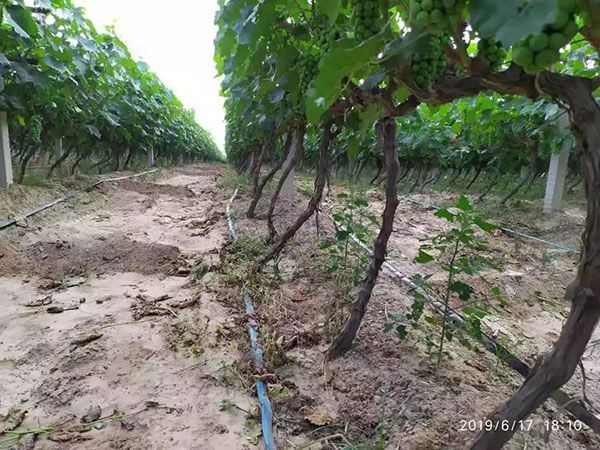For the cultivation of perennial fruit trees, more and more growers are beginning to install dropper systems. At present, the installation of dropper systems is also uneven across the country. Some areas have realized the integration of water and fertilizer, and precise fertilization. In some areas, the dropper only waters without fertilizer, and installs simple water and fertilizer facilities. Why is this happening? Is the dropper system good or bad? Next we do a simple analysis.

Advantages of drip irrigation system for fruit trees
What are the advantages of drip irrigation system compared to flood irrigation? I believe that many growers who use drip irrigation have a certain feeling. Mainly have advantages in the following aspects.
1. Increase salt tolerance in saline-alkali soil
There will be selective absorption of nutrients during the growth of crops. With the development of agriculture, the problem of secondary salinization has occurred in many areas due to the long-term use of chemical fertilizers. If there is a drought in the interval between two irrigations, the salt concentration in the soil will become higher and higher, and it will be more and more difficult for crops to extract water from the soil, and the syndrome caused by salt damage will appear.
The drip irrigation system can maintain a highly humid environment in the root zone of the crop, thereby reducing the crop’s sensitivity to salt. Frequent use of drip irrigation allows crops to continuously absorb new water, and the salt is pushed to the edge of the root zone to prevent damage caused by high salinity around the root system.
2. Saving water and energy to improve fertilizer utilization
In some areas, due to lack of water resources, it is normal for grape growers to rotate water during dry periods. The crops require relatively little water in the seedlings. As the crops grow up, the water requirements also increase. The integration of water and fertilizer can accurately supply water to the crops. At the same time, it can also eliminate water transport loss, channel reservoir loss, and deep seepage loss. Effectively reduce water and fertilizer waste.
3. Increase output and improve quality
● In terms of quality improvement: using drip irrigation equipment, water and fertilizer can be applied slowly, regularly and evenly to ensure consistent crop growth and uniform quality. Since water is prevented from directly contacting the fruits and leaves of crops, so as to avoid the occurrence of many diseases, many water-borne pathogens can quickly spread throughout the garden through flood irrigation, so drip irrigation can effectively prevent the rapid spread of such diseases. It can also avoid excessive humidity in the field and reduce the occurrence of diseases.
● In terms of increasing yield: the water that crops can absorb is the field water holding capacity and the permanent withering point. During the period from the field water holding capacity to the permanent withering point, it becomes more and more difficult for the crop to extract water from the soil, so the evaporation rate is also In decreasing, when the water potential gradually increases, the physiological activities of crops are inhibited and the growth vigor is insufficient, thus reducing the yield. Then, when flooding with flooding, the roots of the crops are inhibited due to the excessive water potential during the period of time after watering. The best condition of the drip irrigation system is to keep the soil water content slightly lower than the field water holding capacity to obtain high yield.
4. Strong adaptability, saving labor
● The drip irrigation system can be used in mountainous and flat terrains with various complex terrains.
● In the process of fertilization, labor is directly saved. Through the integration of water and fertilizer, unified maturity and unified harvesting can be achieved, thereby indirectly saving labor.
● Strong adaptability to different soils. Sandy soil realizes the integration of water and fertilizer by shortening the distance between emitters and clay increasing the distance between emitters.

